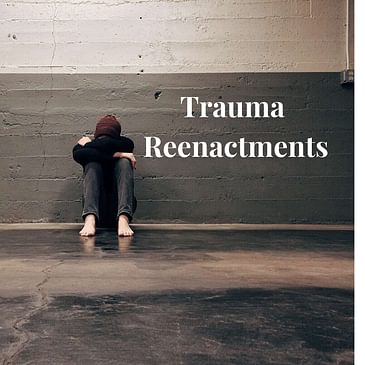Episode Description
In Trauma Reenactments, we discuss what trauma reenactments are, why they happen, and practices to help us identify, stop, and prevent them from happening again. Trauma reenactments are patterns we repeat again and again similar to traumas in the past. They can be pervasive and difficult to notice, because we may believe they are "just the way things are." But they're not. While these patterns are not our fault, if we are able to identify these reenactments, be honest about what they are and where they come from, and create more space between a trigger and a reaction, we are able to gain power over the moment when a trauma reenactment starts to occur, or to stop one that is already occurring. By changing our reaction, we create a new habit, which allows us to heal our trauma reenactments and create space for positive and healthy habits, responses, and relationships in our lives.
Breakdown of Episode
1:17 Intro
4:21 Intro to Trauma Reenactments
6:49 What Are Trauma Reenactments and Why Do They Occur?
11:14 Why Do Trauma Reenactments Occur?
20:56 Reenactments in Close Relationships
25:52 What Are Ways to Heal, Prevent, and Overcome Reenactments?
40:53 Practices to Help You Heal Trauma Reenactments
To view sources, go HERE:
https://docs.google.com/document/d/1eUDTXEehuW_3U6lL9POSvA2bJQI_t7McxIN-4E3p2xA/edit?usp=sharing
Christian Emotional Recovery Resources
Podcast Website
Access Episodes, Get Free Resources, and More
https://christianemotionalrecovery.com/
Facebook Group
Join Community, Get Support, and Get Weekly Encouragement
https://www.facebook.com/groups/christianemotionalrecovery
YouTube Channel
Subscribe for Exclusive Material Not on Podcast
https://www.youtube.com/channel/UC4a5jGXZ0-qzPINAspnLwPw
Christian Emotional Recovery Store
Get meditations, infographics, journals, and other resources for your healing journey
https://www.rachelleroy.com/9527496b-b1ed-4744-875f-dd04bfd3ad2a
Trauma Survivors
Check out Resources Page for Trauma Survivors
https://www.rachelleroy.com/bc953a63-...

